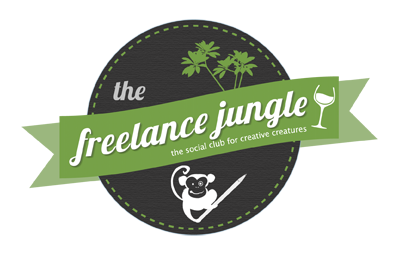Stuck with a bunch of freelance product ideas in your head but no real way to start articulating them? Welcome to thought showers – the easy, low pressure way to getting those ideas out on paper.
Seriously, between Thought Showers, Blog Shells and MSCW, I feel super confident about not only having ideas but also seeing them through to conclusion. Huzzah!
I’m addicted to freelance product ideas. As a former product manager, I can’t help myself to have at least three or four pushing for attention in the old bone bucket.
But you can’t carry all those ideas with you at all times.
Here is what I have learned in relation to freelance product idea articulation and how to apply it through thought showers
What we know about freelance product ideas
There is a certain weight to having so many ideas for freelance products (courses, events, cool ideas, software – you name it, I have had it) but no straightforward way to sort them out. Or get them up off their wonky lamb legs and skipping around the paddock of life.
Sadly, most kick arse freelance product ideas fail to launch. Or they launch and they fail to gain traction.
Some common reasons why include:
Most ideas die before they’re articulated properly
These ideas are trotted out at the coffee meets or networking events or family BBQs but never get much further. Getting them out of your brain and onto paper is paramount.
We get too attached
Freelancers tend to focus on defending our ideas over listening to how it sounds from a different perspective. Your emotional responses guide whether your project will see the light of day.
A great trick I learned in the dating industry is to not wait too long before you fully engage. On a dating service, don’t spend weeks and months getting to know each other before you meet. Meet early and see whether all the facts line up.
Freelance products are the same. You’ve got to get to the development stage quickly to avoid way too much rumination. That rumination only leads to too much emotional attachment and a heck of a lot of overwhelm.
Our peers kind of suck, too
Australians really aren’t a reliable source of comfort if you want to do something risky or that involves a change in thinking. Or conversely, they will barrack for any idea you have without the critical thinking required.
Be really careful about oversharing in the initial stages when your confidence and idea is not fully formed.
We view freelance product ideas as an escape
A lot of freelancers who are over dealing with clients and who have experienced burn out try to invent their way out of the situation. There will always be mixed results with this approach.
Product design is not an all-or-nothing event. But when you are so over your existing job, you see your freelance products as the lifeline out of hell, it can feel this way.
Please don’t do that to yourself.
Experimentation is key and things change rapidly with ideas – they need oxygen to grow. If you put too much pressure on them, you rob your ideas the opportunity to experience that.
We want it to be perfect
Established start-ups and products don’t often resemble their pilot stages. You do have to be comfortable with planning something that might take on a life of its own.
Whether that means being able to change the feature set, change the audience and drop parts of the project you really loved to meet audience demand. Or cope with needing to push your freelance products out more than you expected. Or conversely, cope with wild success outside what you can deliver and the subsequent backlash.
You can’t predict the response. You can only plan for learning post launch.
We can’t keep pace with change
In the fast-paced world of technology and idea delivery, speed is your friend. And that includes in the articulation, focus, delivery, and adapting stages of the lifecycle.
It also wards off overthinking the idea to the point of no launch or launching something that can’t cope with change.
Low hanging fruit makes terrible stains (on the mind)
If you are not that into it, why are you launching it? Let the freelance products that look like the easy fixes that you can’t get motivated to do are released by someone who cares.
There’s nothing worse than releasing something and not really liking it and seeing it fail. Unless you count launching it, it being successful and then being stuck doing it forever.
No clue about maintaining it
All freelance product ideas have a cycle of:
- Defining the idea
- Designing the idea
- Developing the idea
- Maintaining it
You have to imagine what it looks like, put down the practical mechanics, build the thing and then make sure it can survive that launch and reach people. Please burn “if you built it, they will come” in the biggest bonfire you can find. It never, ever happens that way.
Here’s how you can use thought showers to avoid those pitfalls with your freelance products
This is built on a successful freelance workshop structure that is used in pitching ideas, early-stage marketing and so on.
Introduce your topic in 3 mins or less
Write this out and repeat it back to yourself. Include keywords and explanations such as analogies so you and others can quickly get the concept.
“It’s the Airbnb of cars” (e.g., car-sharing), “it’s a Western – but in space” (famously said of Star Trek) or whatever it is.
Explain why you care
If you aren’t excited, how do you expect the audience to be?
Explain where you get stuck in 3 minutes
Are you having trouble nailing the audience down? Do you have trouble envisaging how your freelance products will look on the shelves? Can’t figure out a problem in the delivery?
This is the time to tackle that.
Reciprocate with other group members –
- What I hear when I hear your topic is…
- What excites me about your topic is…
- What I would do if faced with your issue is…
Note: having a framework helps ward off some of the issues with unhelpful feedback I mentioned previously.
Identify a focus for the thought shower
- Why is that focus important? – how will it change the game, make someone’s life easy etc?
- How does it impact the projects or finished freelance products?
- When do you find yourself derailed? Where do you commonly get to without moving forward? What piece of information is missing?
- What do you do when you find yourself there? Be honest about how that impacts you.
Face the best and worst scenarios
This is absolutely wonderful when you discuss it with other freelancers because they are often far braver than we are when it comes to someone else’s ideas.
- What is the best thing that can happen?
- What is the potential you see in someone else’s idea?
- What is the worst thing that could happen?
- What are the sharp rocks you see facing this person?
- What contingency might you put in place to make sure you don’t face these issues?
And you should always do this for yourself, too. That way, you can get some of the issues articulated and gain perspective about the potential of your freelance products in the wild.
Background, Outline, Execution, Result
All life leads back to frameworks in the creation of freelance products.
This super simple one works well for your products, case studies, project outlines and more.
Background
Outline the current scenarios the landscape faces. This is showing how things have done in the past and presenting a new, better way to do it with your idea.
Objectives
The objectives outline is all about introducing the possible. It includes what the product aims to fix. It’s where the present solves the problems of the background with your freelance products at the centre as the future.
This is about dreaming for a better world.
Execution
All the promising ideas and dreaming in the world won’t replace the impact of a well-executed project. You need a plan from the past, present and into that dandy new future.
It should include details of how you aim to achieve what you want.
BUT – don’t get bogged down. We’re talking 4 to 6 talking points maximum. Not an entire product manual!
Results
Until you can see what impact your freelance products have out in the wild, this becomes a way of holding yourself accountable. What kinds of results will indicate success? Most of the time, it’s about clients helped, problems solved, eyeballs reached and love for the product shared.
You can use a mix of analytics and anecdotal here. But it’s a good idea to include both when and where you can.
One page friendship
This information doesn’t have to be a long saga. In fact, you can articulate your idea in one page or less. The aim is to scoop it out of your head and into a format where you can build on your idea.
That way, it’s not knocking on your head at 3am, asking you to build it without any context. Neat, huh?

